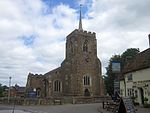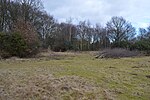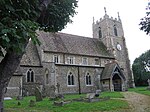Gamlingay Wood

Gamlingay Wood is a 48.4-hectare (120-acre) biological Site of Special Scientific Interest (SSSI) north of Gamlingay in Cambridgeshire. It is managed by the Wildlife Trust for Bedfordshire, Cambridgeshire and Northamptonshire.This is ancient ash/maple woodland on sandy loam soil, an unusual habitat in lowland England. Ground flora include dog's mercury, yellow archangel, wood anemone and the nationally restricted oxlip. The flora is diverse due to the varied soils, and there are hundreds of species of mushrooms and toadstools. Birds include barn owls, garden warblers and blue tits. The 70-hectare (170-acre) Wildlife Trust site includes Sugley Wood, which is not part of the SSSI.There is access from Gamlingay Road and by a footpath from Gamlingay village.
Excerpt from the Wikipedia article Gamlingay Wood (License: CC BY-SA 3.0, Authors, Images).Gamlingay Wood
Gamlingay Road, Huntingdonshire Waresley-cum-Tetworth
Geographical coordinates (GPS) Address Nearby Places Show on map
Geographical coordinates (GPS)
| Latitude | Longitude |
|---|---|
| N 52.165 ° | E -0.187 ° |
Address
Gamlingay Road
Gamlingay Road
SG19 3DH Huntingdonshire, Waresley-cum-Tetworth
England, United Kingdom
Open on Google Maps










